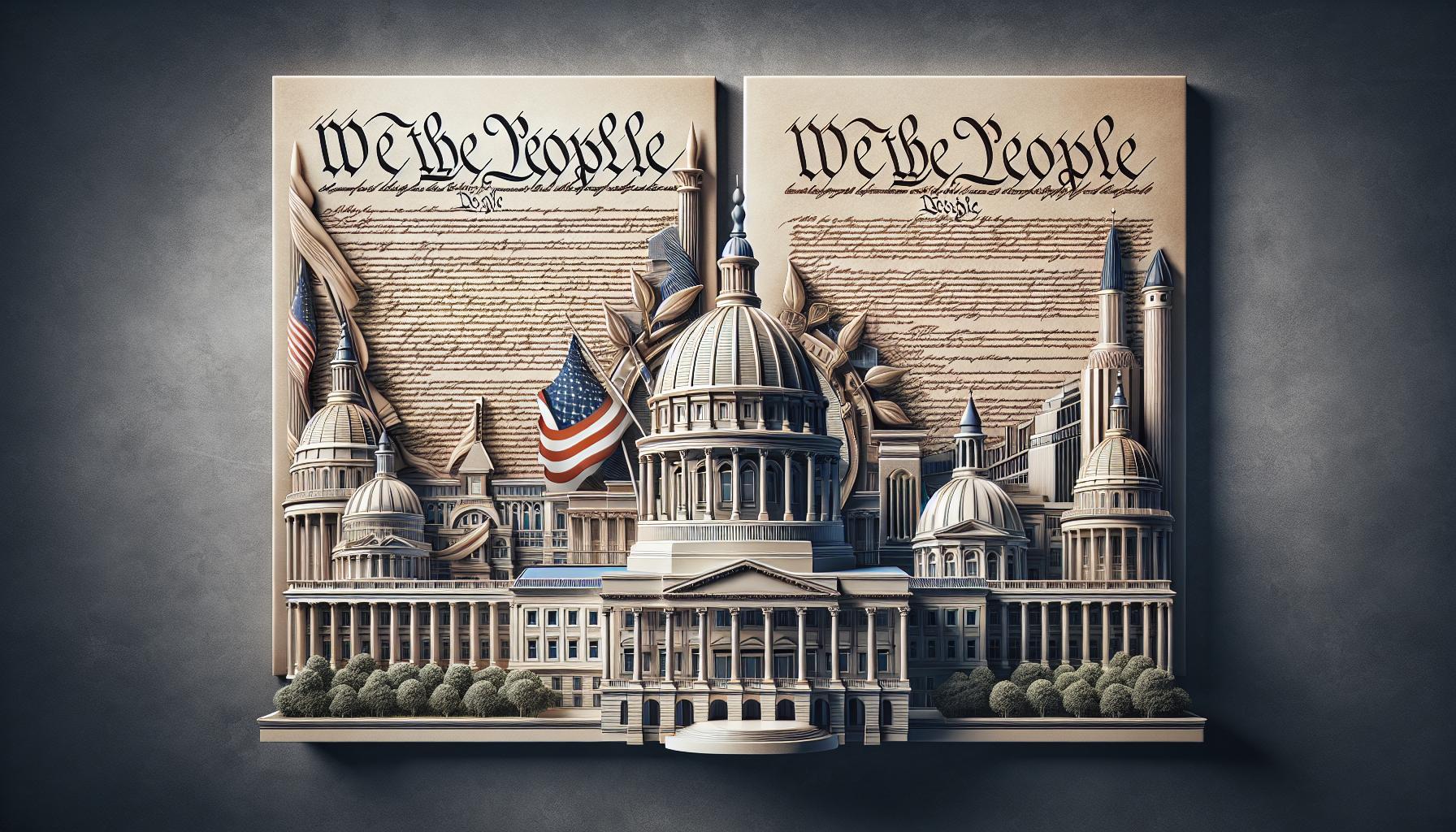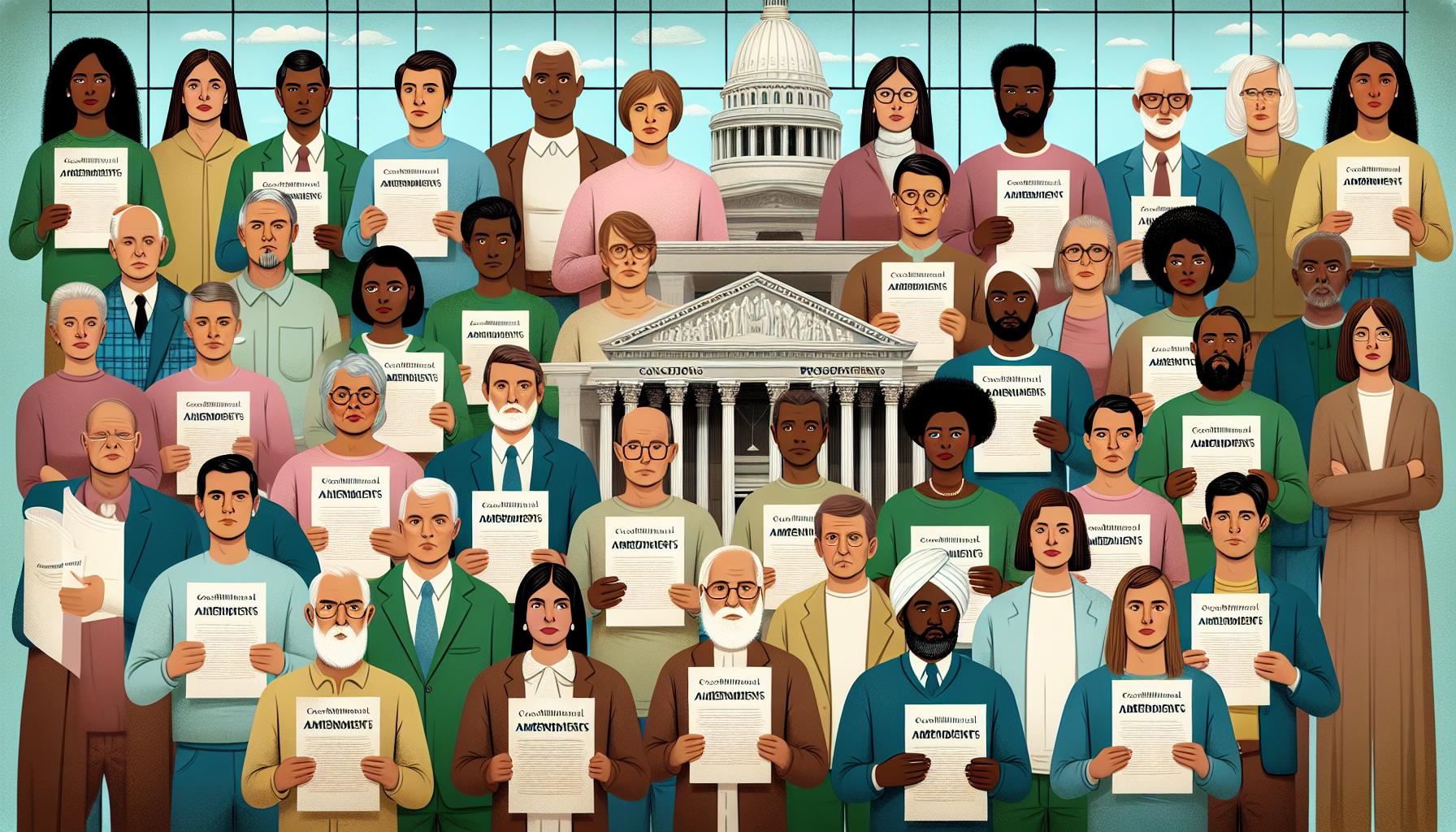When it comes to understanding the foundations of governance, the Georgia Constitution and the United States Constitution share striking similarities. Both documents serve as guiding frameworks, outlining the structure of government, the rights of citizens, and the principles that ensure democracy thrives. While one governs a state and the other a nation, their parallels reveal how deeply connected state and federal systems are.
I’ve always found it fascinating how these constitutions mirror each other in key areas like the separation of powers, checks and balances, and the protection of individual rights. They’re both designed to uphold justice and fairness, making them essential to the way we live and govern. Exploring these similarities not only highlights the influence of the U.S. Constitution but also shows how Georgia’s own document reflects shared values at a more localized level.
Overview Of The Georgia Constitution And The United States Constitution
The Georgia Constitution and the United States Constitution serve as legal frameworks for governance at the state and federal levels. Both documents outline the structure of government, provide for the separation of powers among executive, legislative, and judicial branches, and emphasize checks and balances to maintain accountability.
Both constitutions protect individual rights through enumerated liberties. The U.S. Constitution includes the Bill of Rights, while the Georgia Constitution contains a comprehensive Declaration of Rights in its opening articles. These protections ensure freedom of speech, due process, and other civil liberties.
Amendment procedures exist in both constitutions for adaptability. The U.S. Constitution requires approval by Congress and state legislatures or conventions. In contrast, Georgia’s amendment process involves state legislative approval and voter ratification through statewide elections.
Government responsibilities and citizen interaction differ between the two. The Georgia Constitution provides more detailed guidelines for state-level operations like education and taxation, while the U.S. Constitution focuses on broader national governance. Together, these documents represent a balanced structure for addressing both state-specific and federal matters.
Similarities In Structure

Both the Georgia Constitution and the United States Constitution share fundamental structural principles that ensure effective governance. Their frameworks are designed to distribute and balance power while protecting individual liberties.
Separation Of Powers
Both constitutions define a separation of powers by creating three government branches: executive, legislative, and judicial. In Georgia, the governor leads the executive branch, while at the federal level, it’s the president. Legislatures in both systems pass laws, and independent judicial branches interpret them. This separation ensures no single branch becomes too powerful.
Checks And Balances
Each branch in both constitutions has mechanisms to check the others. For instance, Georgia’s governor can veto legislative bills, mirroring the president’s federal veto power. Legislatures can override vetoes in both systems, with the Georgia General Assembly requiring a two-thirds vote. Judicial review exists at state and federal levels to declare actions unconstitutional, promoting accountability.
Bicameral Legislature
Both constitutions establish bicameral legislatures. Georgia’s General Assembly consists of the State Senate and House of Representatives, resembling the U.S. Congress with its Senate and House of Representatives. Each chamber collaborates in lawmaking, ensuring balanced representation and thorough deliberation.
Shared Principles Of Governance

Both the Georgia Constitution and the United States Constitution reflect foundational principles that ensure fairness and accountability in governance. By emphasizing individual rights, adherence to the rule of law, and the balance of state and federal powers, they maintain a cohesive democratic structure.
Protection Of Individual Rights
Both constitutions prioritize safeguarding individual liberties. The Georgia Constitution includes a Declaration of Rights, addressing freedoms like speech, religion, and due process. Similarly, the U.S. Constitution features the Bill of Rights, which secures comparable protections at the federal level. For example, both documents prohibit unreasonable searches and seizures and protect freedom of expression, reinforcing their shared commitment to civil rights.
Rule Of Law
Under each constitution, the rule of law ensures that no entity or individual stands above the law. Both frameworks establish systems where the judiciary interprets laws impartially, and elected officials are held accountable. For instance, impeachment mechanisms in both documents allow for the removal of officials who violate legal or ethical standards, reinforcing this commitment.
Federalism
The two constitutions share the principle of federalism, enabling governance at multiple levels. While the U.S. Constitution delineates authority between the federal and state governments, the Georgia Constitution focuses on managing state-specific matters within that structure. For example, Georgia governs areas like education under its own authority, while adhering to federal mandates that affect broader national interests.
Comparable Constitutional Amendments Process

Both the Georgia Constitution and the United States Constitution use structured processes to amend their provisions, ensuring changes reflect the will of the governed. Amendments to the U.S. Constitution require a proposal by two-thirds of both Congressional houses or a national constitutional convention, followed by ratification from three-fourths of state legislatures or conventions. Similarly, amendments to the Georgia Constitution involve proposal approval by a two-thirds majority in each chamber of the General Assembly, then ratification through a statewide voter referendum.
Citizen involvement plays a significant role in both processes. For the U.S. Constitution, state-level ratification ensures public representation through legislative or convention decisions. Georgia’s process directly engages citizens through voting during elections, making the state’s mechanisms more accessible and participatory. This alignment in governance principles highlights their shared commitment to democratic amendment procedures.
Parallels In Government Functions

Both the Georgia Constitution and the United States Constitution establish government systems with distinct branches to ensure balanced governance. These branches—executive, legislative, and judicial—function similarly in both frameworks while addressing state and federal responsibilities.
Executive Branch
The executive branch in both constitutions centers on a chief executive, the President at the federal level and the Governor in Georgia. Both roles include enforcing laws, managing executive agencies, and overseeing government operations. They possess veto power to reject legislative bills, ensuring a check on the legislative branch. For example, both the U.S. President and Georgia Governor can veto bills they find problematic, and legislatures retain the authority to override such vetoes with a specific majority vote.
Leadership includes additional responsibilities such as appointing officials, commanding military forces, and directing emergency responses. While the President manages national defense and foreign relations, the Georgia Governor focuses on state-specific issues, such as disaster management or local economic development.
Legislative Branch
The legislative branches of both constitutions consist of bicameral legislative bodies tasked with crafting laws. At the federal level, Congress includes the Senate and the House of Representatives. Georgia mirrors this with its General Assembly, comprised of a State Senate and a House of Representatives.
Representation balances population distribution and equal representation. For example, the U.S. Senate allocates two senators per state, while the Georgia State Senate follows district-based representation. Both legislative branches initiate revenue bills, approve budgets, and conduct oversight of executive actions. Sessions include debate, committee reviews, and voting protocols to ensure legislation complies with constitutional principles.
Judicial Branch
The judicial branches in both frameworks interpret laws and resolve disputes under constitutional guidelines. The U.S. Constitution establishes a Supreme Court, while Georgia’s Constitution similarly features a state Supreme Court as its highest judicial authority. Both systems maintain appellate and lower courts to manage diverse legal cases.
Judges uphold impartiality and ensure justice is applied consistently. For example, both the U.S. Supreme Court and Georgia Supreme Court review cases involving constitutional issues, such as government overreach or individual rights violations. Judicial review acts as a check on legislative and executive actions, preserving the rule of law within their respective jurisdictions.
Conclusion
Exploring the similarities between the Georgia Constitution and the United States Constitution reveals how deeply connected state and federal governance are. Both documents serve as pillars of democracy, ensuring fairness, accountability, and the protection of individual rights. They reflect shared principles that guide government structure and uphold the rule of law while addressing the unique needs of their respective jurisdictions.
These parallels highlight the balance between state-specific governance and broader national frameworks. It’s fascinating to see how both constitutions work together to maintain a cohesive yet flexible system, empowering citizens and preserving democratic values at every level.
Frequently Asked Questions
What is the main similarity between the Georgia Constitution and the U.S. Constitution?
Both constitutions share foundational principles, such as the separation of powers, checks and balances, and the protection of individual rights. They establish a democratic structure that ensures fairness and accountability in governance, reflecting shared values at state and federal levels.
How do both constitutions protect individual rights?
The U.S. Constitution includes the Bill of Rights, while the Georgia Constitution has a detailed Declaration of Rights. Both documents safeguard freedoms like speech, due process, and protection against unreasonable searches or seizures.
What is the role of checks and balances in both constitutions?
Checks and balances prevent any single branch of government from becoming too powerful. For example, both the Georgia governor and U.S. president have veto powers, while legislatures in both frameworks can override those vetoes.
How are the amendment processes of the two constitutions different?
Amendments to the U.S. Constitution require congressional approval and ratification by three-fourths of the states. Georgia’s Constitution amendments involve state legislature approval and voter ratification through a referendum, making it more participatory.
How do the constitutions ensure government accountability?
Both constitutions uphold the rule of law, ensuring that no individual or entity is above it. Mechanisms like impeachment and judicial review hold government officials accountable for their actions.
What are the key structural similarities between the two constitutions?
Both constitutions establish three branches of government—executive, legislative, and judicial—ensuring separation of powers. Additionally, both feature bicameral legislatures to promote balanced representation in the lawmaking process.
What is the difference in focus between the Georgia and U.S. Constitutions?
The U.S. Constitution addresses broad national governance, while Georgia’s Constitution provides specific guidelines for state matters like education, taxation, and local operations, ensuring state-specific clarity.
How does federalism function in both constitutions?
Federalism allows governance at multiple levels. The U.S. Constitution governs national issues, while the Georgia Constitution handles state-specific policies while adhering to federal mandates, reflecting interconnectivity.
What roles do the executive branches have under each constitution?
The U.S. president and Georgia governor lead the executive branches, enforce laws, propose agendas, and exercise veto power over legislative bills within their respective frameworks.
Why are bicameral legislatures important in both constitutions?
Bicameral legislatures, like the U.S. Congress and Georgia’s General Assembly, promote balanced representation. This ensures thorough debate and deliberation, leading to more effective and fair lawmaking.